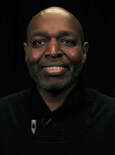 James* James* By Gretchen Schuldt Witnesses said Alphonso James was the man they saw with Delbert Pascavis or outside Pascavis' house the night he was murdered in July 1985. James' friends, though, swore he was with them at those times. Both things cannot be true. The jury believed the prosecution witnesses and James went off to prison for the next 31 years. To this day, James says he is innocent; he says he did not kill Pascavis. Mistaken eyewitness identifications are a huge problem. The Innocence Project says they were involved in 71% of the more than 360 wrongful convictions in the United States later overturned by post-conviction DNA evidence. After the Pascavis homicide, witnesses gave varying descriptions of the man they identified as James. One said he was in his late 20s to early 30s, 6' 1"-6'2', and 190-200 pounds. Another said he was about 25 and 5'5" to 6" tall. James was 17, 5'9", and 154 pounds. The witness accounts and James' confession, which he gave after more than seven hours in custody without a lawyer and almost immediately repudiated, were the key elements in his conviction. One witness told police she observed Pascavis and James together starting shortly after 4 p.m. and saw them together "throughout the evening hours." At one point, they were sitting on the porch and sharing a bottle. "She thought it was beer or something else, because the longer they talked, the louder they got," according to a police report. The witness, who did not testify in court, told police the last time she saw Pascavis alive was about 11 p.m. July 26 and he still was with James. The witness identified James from police photos. She could not pick him out of line-up, however. James' girlfriend, Patricia Lewis – the two had a child together – told police that he came to her home about 8:30 p.m. the evening of the murder and left about 10:25 p.m. Part 1 Part 2 Part 3 Part 4 Another prosecution witnesses, Sheryl Knox, told police she saw a young black man attempt to start Pascavis' car about 12:10 a.m. the night of the murder. The streetlights in the area were not working at the time. When shown a police photo array that included James' picture, Knox positively identified James, a police report said. Knox testified at trial, however, that she told police that James "could be the one, but I wasn't quite sure." She positively identified James in a police line-up two months after the murder. Denise Lusk, also a girlfriend of James' and pregnant by him, testified that he was with her that night. He left with a friend about 8 p.m., returned, listened to tapes until 10:30 p.m., when he left again to go to the store. He returned about 11 p.m. and stayed until 1:09 a.m., Lusk said. She testified she knew when James left because she called the time. She said she first told police she did not see James after 10:30 p.m. the night of the murder. She lied, she said. "I wasn't suppose to have no company that night, and I didn't want my mother to know he was over that late," she said. She said the officers who first questioned her did not tell her James was a suspect in a murder case. Lusk's sister also testified that James was at the house until 1 a.m. Another prosecution witness, Linda Lawrence-Croston, testified she saw Pascavis with a young Black man about 6 p.m., according to a police report. At first, when police showed her a series of black-and-white photographs, Lawrence-Croston could not identify anyone. She later picked James' picture out of a series of color photos, according to a police report. Raleigh Garner, James' friend, testified that he and James went together to the homes of Denise Lusk and Patricia Lewis. They were both at Lusk's house from 11 p.m. to 1:30 a.m., he said. Garner said he did not contact police about being with James that evening. Garner said he told James' family and that Kohler's investigator had contacted him in August 1985. *Photo courtesy of Hupy and Abraham
0 Comments
Your comment will be posted after it is approved.
Leave a Reply. |
Donate
Help WJI advocate for justice in Wisconsin
|
Copyright © 2024 Wisconsin Justice Initiative Inc.
The Wisconsin Justice Initiative Inc. does not endorse candidates for political office. The Wisconsin Justice Initiative Inc. is a 501(c)3 organization.
The Wisconsin Justice Initiative Inc. does not endorse candidates for political office. The Wisconsin Justice Initiative Inc. is a 501(c)3 organization.


 RSS Feed
RSS Feed